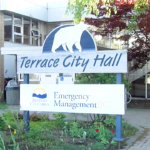They have been on the frontlines of wildfires in B.C., the west coast of the U.S. and Australia that have killed dozens of people and burned areas larger than entire countries.
And these grizzled firefighting pros, assembled by FireSmart BC, have a message for people in the Skeena and across the province as we enter what could be a dangerously dry and hot season.
“After years of devastating wildfires, we asked firefighters and experts from all over the world one question, what have you learned?” says a new video created by the organization. “As it turns out, people who have fought these fires also saw a silver lining: the homes that survived did something different, but simple.”
The people whose homes were left standing after a monstrous blaze, the experts explain, prepared for what was coming.
“Embers from a fire can travel up to 2 km,” said Stewart Kreltzheim, Assistant Chief Fire Officer in the Australian state of Victoria. “The house that’s not prepared, that has uncut lawns, brush up against the house leaves in the gutters is fuel for the fire and recipe for disaster.”
Nick Haile, a stewardship forester from Oregon, agrees.
“If we pull up to two houses and one has wood siding and a wood roof, and the other one has a metal roof, the one with the metal roof that’s been prepped is going to be more defensible,” he said.
Prepping doesn’t have to be difficult, says Lindsay King, a BC FireSmart educator. “Remove flammable items from the perimeter of your home. So including firewood, including construction materials, lawn furniture, everything that will burn, move it at least 10 metres away from any other structure,” she explains.
The FireSmart website has 10 simple tips for making your home as safe as possible.
Already, fire experts are warning of an increased wildfire risk in the Skeena and other parts of the province due to “conditions of low humidity and little precipitation”. Down south, it could be a devastating fire year in California because of precipitation 70 percent below normal, which scientists have linked to an unprecedented rise in greenhouse gas emissions.
“It could be a big year when it comes to fire acres,” said San Jose State University fire expert Craig Clements. “Climate change has impacted our fire season.”



